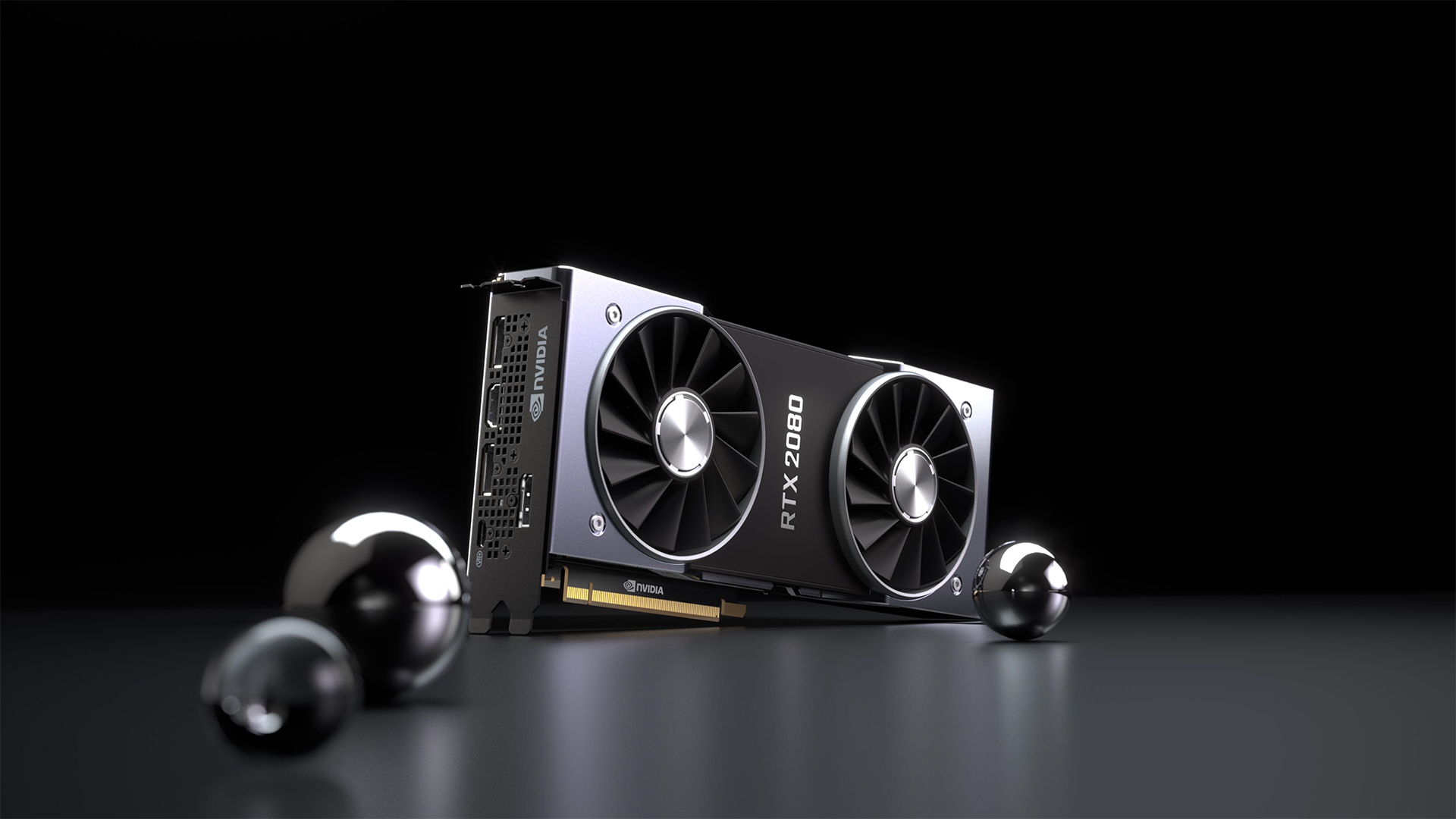Nvidia GeForce RTX 2080: should you upgrade?

After months and months of waiting, it’s finally here. The Nvidia GeForce RTX 2080 has been announced at Gamescom 2018, and it promises a huge jump in performance over the previous generation. However, is that jump in performance worth the price to upgrade?
Well, let’s figure this out, together.
The RTX 2080 rocks 2,944 CUDA cores, 8GB of GDDR6 VRAM, which is a huge jump over the GTX 1080’s 2560 CUDA cores, 8GB of GDDR5 VRAM. Nvidia CEO Jensen Huang insisted that this will mean a monumental increase over 2016’s model.
So, for anyone who is currently rocking a GTX 1080 in their build, the value is a bit dubious – unless you absolutely need the best performance available, and we couldn’t blame you for that. The true value, though, is going to be for anyone who skipped the 10-series and is still rocking either a GTX 970 or 980 (or even older). If you’re looking for a way to break into 4K gaming, now’s the time to take the high-resolution dive.

Price to performance
The new GeForce cards are, well, expensive – it can’t be denied. The Nvidia GeForce RTX 2080 Ti will set you back $1,199 (£1,099, AU$1,899). That’s a lot of money to spend on a card, but that’s not what we would recommend for most people.
The RTX 2070 and 2080 are going to be the sweet spot for most people, costing $599 (£569, AU$899) and $799 (£749, AU$1,199), respectively. These cards will theoretically be able to handle 4K/60FPS gaming without breaking a sweat, as they’re specced higher than the GTX 1080 Ti at a lower price point.
What this means is that 4K gaming is absolutely affordable for the first time, and when aftermarket designs start rolling out in the coming months, it’s going to become even more attainable for more people.
Sign up for breaking news, reviews, opinion, top tech deals, and more.

4K or not 4K?
For years, 1080p has been the de facto resolution for most gamers – with a small segment preferring 1,440p displays – and Nvidia Turing might just mark the beginning of the end for that era. Even the RTX 2070 should be able to max out most current games at 4K and still get a silky smooth framerate. But, what if you’re good with sticking with a lower resolution?
Monitors are expensive – especially high-resolution ones, so it can get pretty expensive to upgrade all of your equipment to a higher resolution. These Turing cards, then, might not be worth the investment, as the GTX 10-series will be able to handle 1080p, and even 1,440p, gaming for a while.
However, if you already have the equipment, or you’re willing to make the jump, the Nvidia GeForce RTX 2080 is going to make a world of difference.

The games we play
Ok, but the 1080 and the 1080 Ti can already play games at 4K, right? Right now, yeah, but only barely. The 1080 Ti is currently able to max out most games at a 4K resolution, but 1080 users have to turn down a few options to hit that 60fps sweet spot.
So, a lot of the decision is going to have to come down to the games you play. If you play a lot of E-sports or older games like Overwatch, Counter-Strike: Global Offensive or even World of Warcraft: Battle for Azeroth, the huge investment really isn’t going to be worth it – most current graphics cards can max out those games with tons of room to spare.
Where these new cards are going to shine is in the games that’ll come out over the next few years or so. At its Gamescom presentation, Nvidia showed off how the RTX technology affects the lighting and shadows in upcoming games like Shadow of the Tomb Raider and Metro: Exodus – it was nothing short of breathtaking.
If you’re the type of gamer that likes to stay on the cutting edge, playing the latest games on the latest technology, then the RTX 20-series is going to be the way to go – we know we can’t wait to see all the latest games running in all of their high-res glory.

Should I buy it?
At the end of the day, everything boils down to what you want to do with your tech. It’s unlikely that ray tracing, the highlight feature of the new cards, is going to be a huge part of the games that come out for the rest of 2018 and probably most of 2019. However, the RTX 2080 and the rest of the Turing family are going to be a massively important improvement over current-generation graphics cards and could herald a revolution for PC gaming.
However, it’s too early to tell.
Right now, our advice is to take a look at your current equipment, your budget and what you want to do with your computer. If you’re just going to be playing lightweight games at 1080p, or if you already have a GTX 1080, it’s probably not going to be worth the upgrade right at this moment.
However, if you’ve been sitting on a Maxwell (or older) GPU, biding your time and waiting to upgrade, it’s hard to think of a better time to make the jump. Nvidia CEO Jensen Huang made a huge deal about the RTX 2080 Ti being 10 times more powerful than the GTX 1080 Ti – imagine how much more powerful it is than a GTX 980 or 970.
- Catch up with the best graphics cards before the Nvidia GeForce RTX 2080 arrives

Jacqueline Thomas (Twitter) is TechRadar's former computing editor and components queen. She is fat, queer, and extremely online, and is currently the Hardware and Buying Guides Editor for IGN.